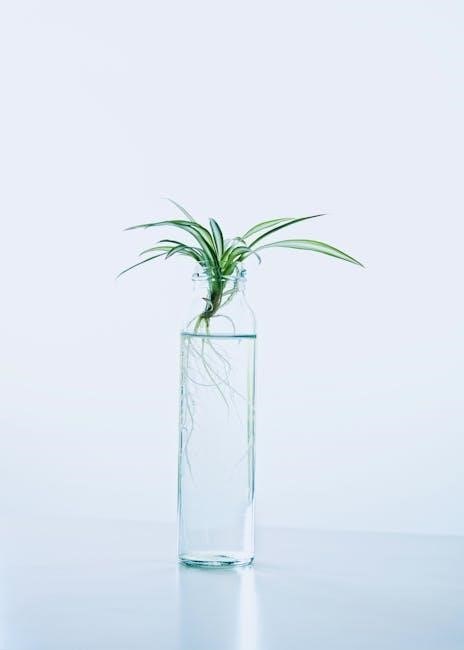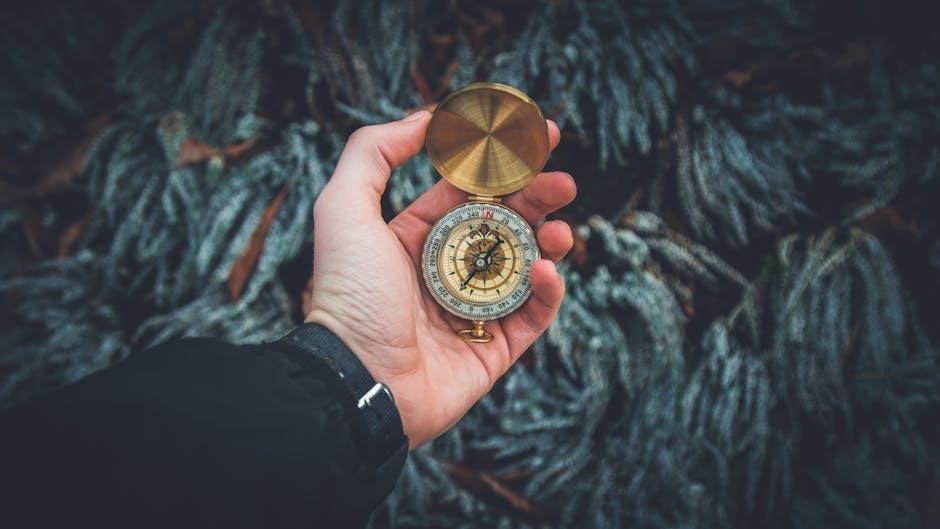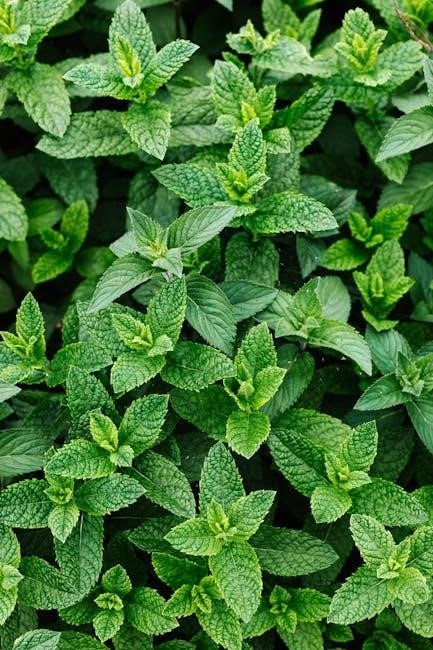
Welcome to the Earthbox growing guide! This comprehensive resource will walk you through successfully growing vegetables and other plants using the innovative Earthbox system. From setup to harvest, we’ll cover essential tips and instructions for maximizing your yields. Get ready to enjoy fresh, homegrown produce with ease!
What is an Earthbox?
The Earthbox is a unique, self-contained, and sustainable container gardening system designed to simplify the process of growing vegetables, herbs, and flowers; It utilizes a closed-bottom container with a wicking system, eliminating the need for frequent watering and minimizing water waste. This innovative design allows plants to efficiently absorb water and nutrients from the soil, leading to healthier growth and higher yields.
Unlike traditional gardening methods, the Earthbox requires no tilling, weeding, or digging. Its self-watering design ensures consistent moisture levels, reducing the risk of over or under-watering. The fertilizer strip, a key component of the Earthbox system, provides a continuous supply of nutrients to the plants, promoting vigorous growth throughout the growing season.
The Earthbox is an ideal solution for gardeners of all skill levels, especially those with limited space or time; Whether you have a small balcony, patio, or backyard, the Earthbox can help you create a thriving garden with minimal effort. Its portability also allows you to move your garden indoors during colder months, extending your growing season and enjoying fresh produce year-round.
Benefits of Using an Earthbox
The Earthbox offers numerous advantages for both novice and experienced gardeners. One of the primary benefits is its ease of use. The self-watering system and pre-determined fertilizer placement simplify the growing process, eliminating much of the guesswork involved in traditional gardening. This makes it an ideal option for beginners or those with limited time.

Another significant advantage is water conservation. The closed-bottom design and wicking system minimize water loss through evaporation and runoff, making it a more sustainable gardening method. Plants receive a consistent supply of moisture directly to their roots, reducing the need for frequent watering and conserving valuable resources.
Earthboxes also offer improved yields compared to traditional gardening methods. The consistent moisture and nutrient supply promote vigorous plant growth, resulting in larger and more abundant harvests. The controlled environment minimizes the risk of pests and diseases, further contributing to higher yields and healthier plants. Furthermore, the Earthbox is portable, allowing gardeners to move their plants to optimal locations for sunlight and protection from harsh weather conditions.
Setting Up Your Earthbox
Setting up your Earthbox is a straightforward process. First, gather your Earthbox container, peat-based potting mix, dolomite lime, and fertilizer. Place the Earthbox on a level surface in a location that receives adequate sunlight. Next, fill the Earthbox with potting mix, ensuring it is evenly distributed.
Now, create a fertilizer strip in the center of the Earthbox, following the manufacturer’s instructions. This strip will provide essential nutrients to your plants throughout the growing season. Sprinkle dolomite lime over the potting mix to help prevent blossom end rot and provide calcium and magnesium to your plants. Be careful not to substitute dolomite with hydrated lime.
After adding the fertilizer and lime, thoroughly water the potting mix. The Earthbox utilizes a self-watering system, so fill the reservoir until it is full. Allow the potting mix to become fully saturated before planting your seeds or seedlings. Following these simple steps will ensure your Earthbox is properly set up for a successful growing season.
Choosing the Right Growing Media

Selecting the appropriate growing media is critical for the success of your Earthbox garden. Most growing media are suitable, but a high-quality peat-based potting mix is generally recommended. Avoid using garden soil, as it can be too dense and may not provide adequate drainage for container gardening. The growing media should be lightweight and well-aerated to promote healthy root growth.
When choosing your potting mix, look for a blend that contains peat moss, perlite, and vermiculite. These components help retain moisture while providing sufficient drainage and aeration. Some potting mixes may also contain added nutrients, which can be beneficial for plant growth. Ensure the growing media is specifically designed for container gardening to avoid potential problems.
Avoid overfilling the Earthbox system with growing media, as this can hinder the self-watering function. The media should be evenly distributed, ensuring that the fertilizer strip remains uncovered. Selecting the right growing media will create an optimal environment for your plants to thrive in your Earthbox.
Planting Instructions
Proper planting is essential for a thriving Earthbox garden. Begin by referring to the plant selection chart and fertilizer placement pattern provided. This will guide you in determining the correct number of seedlings for the plants you wish to grow. Resist the temptation to overcrowd the Earthbox, as this can hinder growth and reduce yields.
When planting seedlings, gently remove them from their containers and loosen the root ball slightly. Dig a small hole in the growing media and carefully place the seedling, ensuring the top of the root ball is level with the surface. Fill the hole with growing media and gently pat down to secure the plant. For seeds, follow the recommended planting instructions provided with the seed packet.
After planting, water the seedlings or seeds thoroughly to help them establish. Refer to the combination planting chart for guidance when planting different plant types in one Earthbox, adjusting the number of plants accordingly. Remember, following these planting instructions will set your Earthbox garden up for success.
Fertilizer and Placement
Proper fertilization and placement are crucial for optimal plant growth in your Earthbox. The Earthbox is specifically designed to be used with a strip of common dry, granular fertilizer or plant food formulated for vegetables. Avoid substituting dolomite with hydrated lime, as the Earthbox system is designed to work with granular fertilizer.
When setting up your Earthbox, carefully follow the instructions for fertilizer placement. Typically, a strip of fertilizer is placed along the top of the growing media, underneath the plastic mulch cover. This allows the plants to access nutrients as needed through the wicking action of the growing media;
Choosing the right location for your Earthbox is equally important. Select a spot that receives at least six to eight hours of sunlight per day. It’s also recommended to set up your Earthbox close to its final location for the season, as moving it once it’s filled with soil and plants can be difficult.
Watering Your Earthbox
Watering is a critical aspect of maintaining a healthy Earthbox garden. The Earthbox system is designed to be watered from the bottom, utilizing a reservoir that provides consistent moisture to the plants. Begin by filling the reservoir through the fill tube until water begins to come out of the overflow holes.

Monitor the water level regularly, especially during hot weather. Check the reservoir every day and refill as needed. The frequency of watering will depend on factors such as temperature, humidity, and the type of plants you are growing. Young seedlings may require more frequent watering until their root systems are established.
Avoid overwatering, as this can lead to root rot and other problems. The Earthbox is designed to prevent overwatering by allowing excess water to drain out of the overflow holes. As a general rule, water thoroughly whenever the reservoir is empty, ensuring that the growing media remains consistently moist but not waterlogged. Consistent moisture levels are key to success!
Choosing the Right Plants

Selecting suitable plants is essential for a successful Earthbox garden. Consider your local climate, sunlight exposure, and personal preferences when making your selections. Many vegetables, herbs, and flowers thrive in Earthboxes, but some are better suited than others.
For beginners, tomatoes, peppers, cucumbers, and lettuce are excellent choices. These plants are relatively easy to grow and produce abundant yields in Earthbox systems. Herbs like basil, parsley, and oregano are also well-suited for container gardening.
When choosing plants, pay attention to their mature size. Avoid overcrowding your Earthbox by selecting compact varieties or limiting the number of plants per container. Refer to planting guides for recommended spacing and plant combinations. Some plants can even complement each other! Also, you can consider your watering habits, and choose plants that are suitable for you. Remember, proper planning ensures a bountiful harvest and a thriving garden!
Avoiding Common Problems
Even with the Earthbox’s design, certain issues can arise. Blossom end rot, often caused by calcium deficiency, can affect tomatoes and peppers. Ensure adequate calcium by using dolomite lime. Overwatering or underwatering can also lead to problems. Monitor soil moisture and adjust accordingly.
Pests like aphids and whiteflies can infest your plants. Inspect regularly and use organic pest control methods if necessary. Diseases such as powdery mildew can also occur, especially in humid conditions. Provide good air circulation and consider using disease-resistant varieties.
Nutrient deficiencies can manifest as yellowing leaves or stunted growth. Use a balanced fertilizer and amend the soil as needed. Avoid overcrowding, which can increase the risk of disease and pest infestations. By addressing these common issues proactively, you can maintain a healthy and productive Earthbox garden. Regular observation will help you identify any problems early!
Additional Resources and Guides
To further enhance your Earthbox gardening experience, explore these valuable resources. The official Earthbox website (EarthBox.com) offers a wealth of information, including planting guides, troubleshooting tips, and instructional videos. Their blog features articles on various gardening topics, from choosing the right plants to maximizing your yields.
Consider consulting local gardening experts at nurseries or cooperative extension offices. They can provide tailored advice based on your specific climate and growing conditions. Online gardening forums and communities offer a platform to connect with other Earthbox users, share experiences, and ask questions.
Look for books and articles on container gardening and specific plant varieties. Many resources provide detailed information on fertilizer requirements, pest control strategies, and disease prevention techniques. By utilizing these additional resources and guides, you’ll be well-equipped to tackle any challenges and achieve a thriving Earthbox garden. Knowledge is key to a successful harvest!